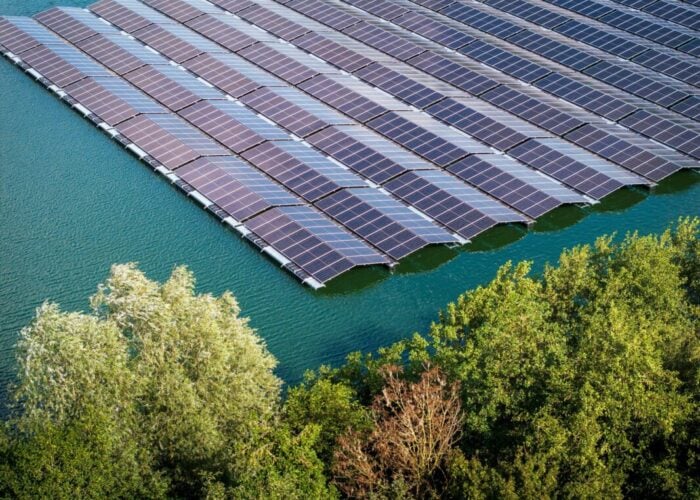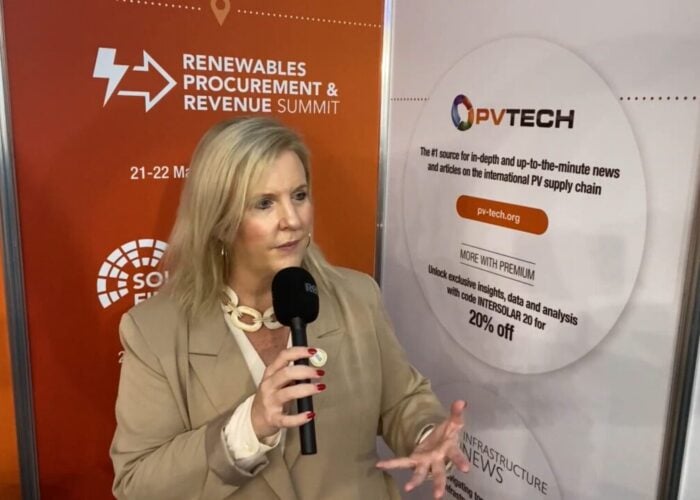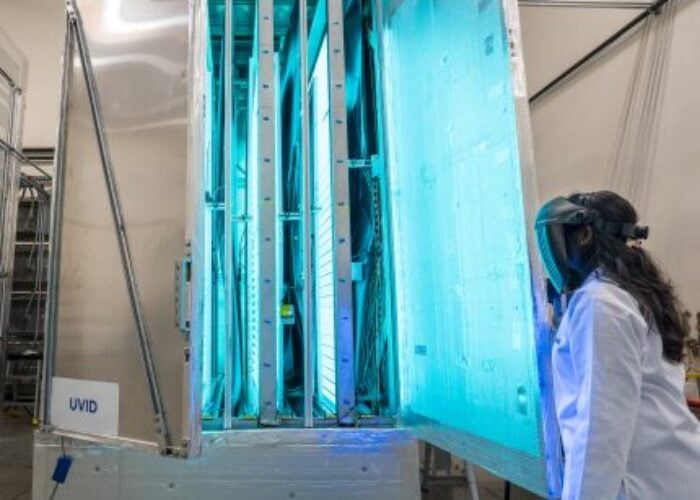Multi-junction solar cells with conversion efficiencies of almost 50% could become cost effective via a collaboration between equipment supplier EV Group and Fraunhofer ISE.
The RD&E collaboration will work to develop electrically conductive and optically transparent direct wafer bonds at room temperature using mismatched material combinations like gallium arsenide (GaAs) on silicon, GaAs on indium phosphide (InP), InP on germanium (Ge) and GaAs on gallium antimonide (GaSb) to boost efficiencies while offering significantly lower material cost.
Try Premium for just $1
- Full premium access for the first month at only $1
- Converts to an annual rate after 30 days unless cancelled
- Cancel anytime during the trial period
Premium Benefits
- Expert industry analysis and interviews
- Digital access to PV Tech Power journal
- Exclusive event discounts
Or get the full Premium subscription right away
Or continue reading this article for free
Dr. Frank Dimroth, Head of department III-V – Epitaxy and Solar Cells at Fraunhofer ISE said, “Using direct semiconductor bond technology developed in cooperation with EVG, we expect that the best material choices for multi-junction solar cell devices will become available and allow us to increase the conversion efficiency toward 50 percent.”
According to Fraunhofer ISE, to achieve higher cell efficiencies requires the development of four- and five-junction solar cells with new material combinations, which can utilise the full spectrum between 300-2000nm.
Markus Wimplinger, corporate technology development and IP director for EVG said: “Fraunhofer ISE's broad expertise in the area of PV, specifically in concentrated PV cell manufacturing and photonics, will allow us to characterize bonding interfaces with respect to PV applications on our new ‘ComBond’ equipment platform.”
EVG said its ‘ComBond’ technology enables the formation of bond interfaces between heterogeneous materials – such as silicon to compound semiconductors, compound semiconductors to compound semiconductors, Ge to silicon and Ge to compound semiconductors – at room temperature, while achieving excellent bonding strength on substrates as large as 200mm.






